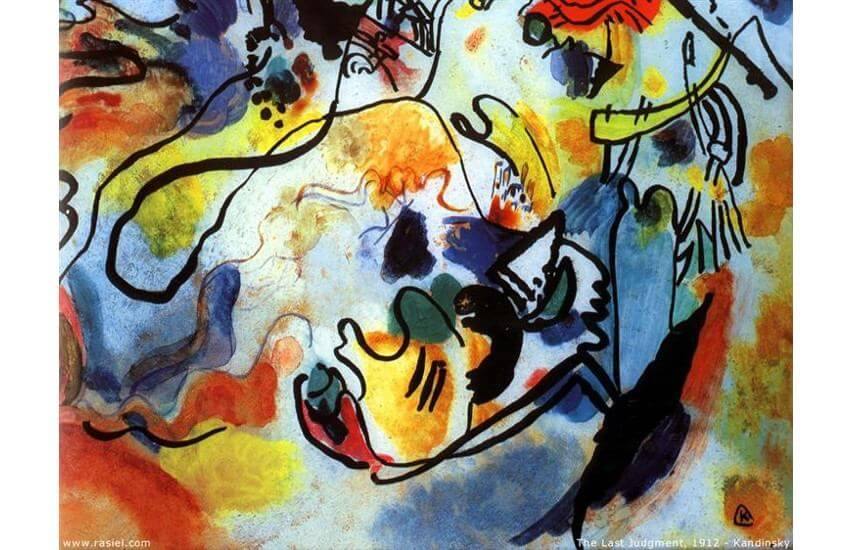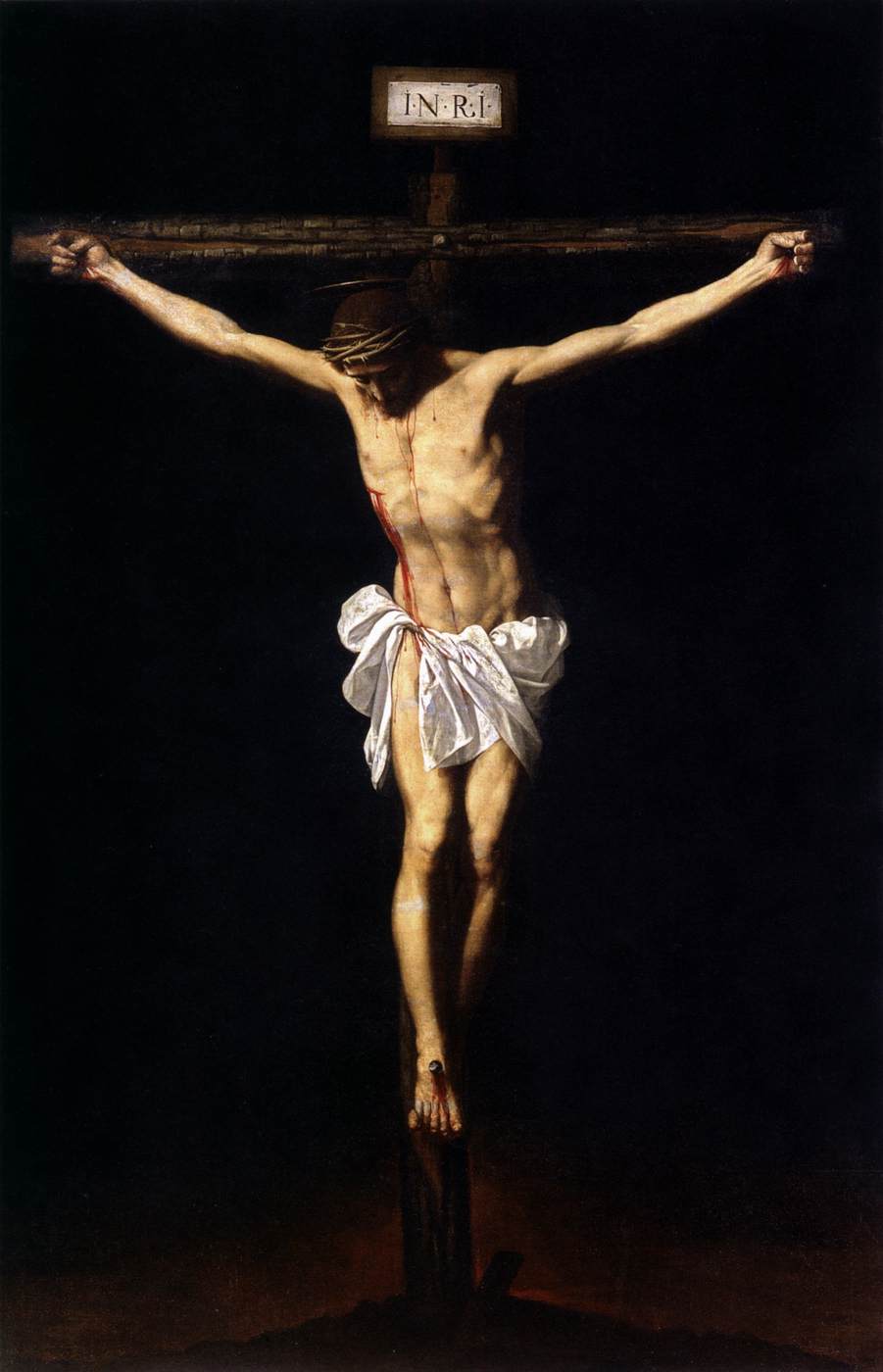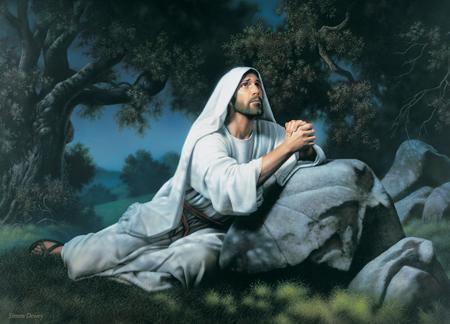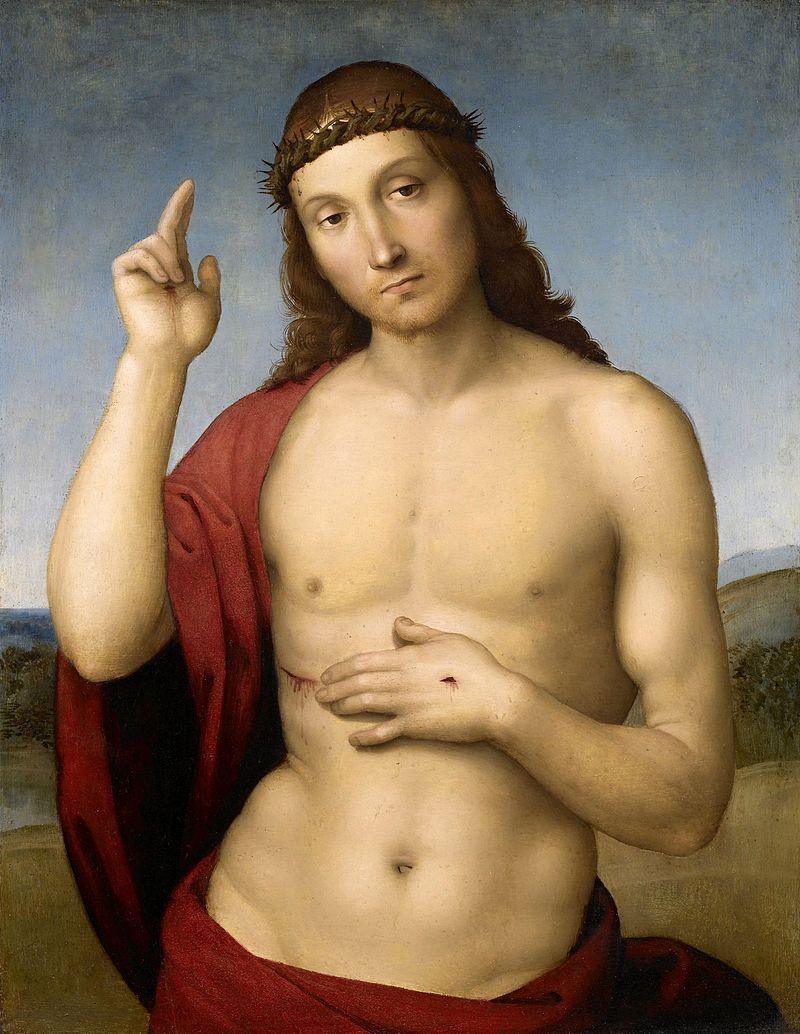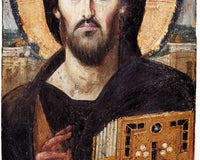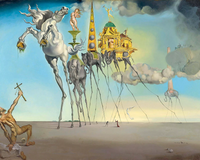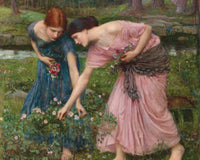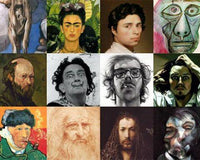To discover the true roots and meaning of lyrical abstraction, and to understand how they interact with its trends in art, we must look to the early days of abstract art.
Lyrical abstraction is an apparently simple term, yet for generations its origin and meaning have been debated. American art collector Larry Aldrich used the term in 1969 to define the nature of several works he had recently gathered, which, in his opinion, indicated a return to personal expression and experimentation following minimalism.
But French art critic Jean José Marchand used a variation of the term, Abstraction Lyrique, decades earlier, in 1947, to refer to an emerging European trend in painting similar to abstract expressionism in the U.S. Both uses of the term referred to art characterized by free, emotive, and personal compositions detached from objective reality.
But those trends can be traced even further back, at least to the first decade of the 20th century in the work of Wassily Kandinsky.
Lyrical abstraction - early steps

Vassily Kandinsky 1911, Composition No. 4
While it can be said that Russian painter Wassily Kandinsky (1866-1944) was a pioneer in the elegant combination of narrative, form, and color that is the basis of lyrical abstraction, the trend emerged in an exhibition titled "L'Imaginaire," which was held at the Galerie du Luxembourg in Paris in 1947, featuring works by Hans Hartung, Wols (Alfred Otto Wolfgang Schulze), and Jean-Paul Riopelle, among others.
The current term "Abstracción Lyrique" was coined by French painter and co-organizer of the exhibition Georges Mathieu (1921-2012), while his curatorial colleague Jose-Jean-Marchand wrote that some of the exhibited works showed "a lyricism detached from all servitude ...", meaning that the paintings were not derived or burdened by the weight of intellectual theory.
Seeking the lyrical in lyrical abstraction
In the 1910s, several different groups of artists flirted with the concept of lyrical abstraction, each from a unique perspective. Cubist and futurist artists worked with images from the real world and modified them conceptually to express abstract ideas. Suprematist and constructivist artists were working with recognizable forms in their art, but using them in ambiguous or symbolic ways, or in a manner attempting to convey universals.
But another group of artists approached abstraction from a completely different perspective than the others.
This group, embodied by Wassily Kandinsky, approached abstraction from the perspective that they did not know what meaning what they painted could have. They hoped that by simply painting freely, without preconceived notions of aesthetics or the objective world, something unknown could be expressed through their work. Kandinsky compared his paintings to musical compositions, which communicated emotions in a completely abstract manner. His abstract paintings were imaginative, emotive, expressive, personal, passionate, and completely subjective; in other words, lyrical.
Characteristics of lyrical abstraction: confusion of styles

"Enlightened Men", Taro Okamoto (1955), National Museum of Modern Art, Tokyo
In theory, Art Informel was the main movement encompassing numerous sub-styles and sub-groups, such as Forces Nouvelles, CoBrA, Tachisme, Art Brut, Art Non Figuratif, and Lyrical Abstraction. All of these schools were abstract or at least semi-abstract, all rejected geometric abstraction as well as naturalism and figurative genres. All artists sought to create a new and spontaneous painting style, free from past theories or present conventions. Despite all this, many abstract painters of the time were members of one or more of these sub-movements, and as a result, it is almost impossible to identify with authority which paintings belong to each of these movements.
Post-war Lyrical Abstraction
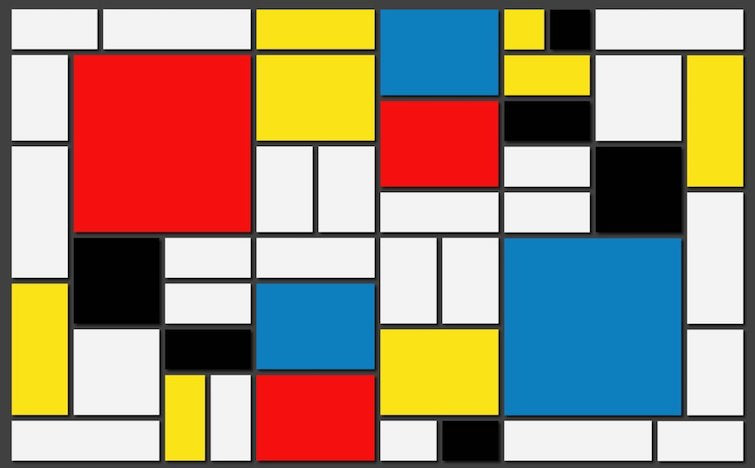
De Stijl, Medium
The lyrical abstraction of Kandinsky contrasted with many other trends in abstract art of the 1920s and 1930s. His art was not specifically associated with any religion, but there was something openly spiritual about it. Other artists associated with styles such as De Stijl, Art Concrete, and Surrealism were making art that was secular and lent itself to objective academic interpretation. Kandinsky sought something that could never be completely defined or explained. He openly expressed his personal connection to the mysteries of the universe. It was as if he had invented a kind of spiritual existentialism.
Existentialism was a philosophy that rose to fame after World War II, when people struggled to understand what they perceived as the meaninglessness of life. Critical thinkers could not believe that a higher power could exist that allowed for the kind of destruction they had just witnessed. But instead of becoming nihilists in the apparent absence of God, existentialists tried to make their way through the general meaninglessness of life, seeking personal meaning. As the existentialist author Jean-Paul Sartre wrote in his book Being and Nothingness in 1943, “Man is condemned to be free; he is responsible for everything he does.” The search for what is essentially personal was fundamental to existentialism and also to the widespread resurgence of lyrical abstraction after World War II.
Other names associated with Lyrical Abstraction
Throughout the 1940s and 1950s, a large number of abstract art movements emerged that, in one way or another, involved subjective personal expression as a basis for expressing meaning in art. Abstraction Lyrique, Art Informel, Tachisme, Art Brut, Abstract Expressionism, Color Field art, and even conceptual and performance art, all, to some extent, trace back to the same general existential quest. One of the most influential art critics of this time, Harold Rosenberg, understood this when he wrote: "Today, every artist must commit to inventing themselves ... The meaning of art in our time flows from this function of self-creation."
But as culture changed with the next generation, many of these existential trends in art fell from grace. And once again, a geometric, concrete, and emotionless approach to abstract art, embodied by minimalism, took their place.
But not all artists abandoned the lyrical tradition. By the late 1960s, the tide had changed once again. As noted by Larry Aldrich, who revived the term Lyrical Abstraction in 1969, “At the beginning of last season, it became evident that in painting there was a movement moving away from the geometric, the hard, and the minimalist, towards more lyrical, sensual abstractions, romantic in softer and more vibrant colors… The artist's touch is always visible in this type of painting, even when the paintings are made with guns, sponges, or other objects.”
Contemporary lyrical abstraction

Jimenez-Balaguer, detail
It is evident that, as is often the case with art movements, the trends that define lyrical abstraction predate the coining of the term. In the early decades of the 20th century, artists such as Wassily Kandinsky, Alberto Giacometti, Jean Fautrier, Paul Klee, and Wols first embodied the lyrical tendencies in abstraction. And decades later, artists such as Georges Mathieu, Jean-Paul Riopelle, Pierre Soulages, and Joan Mitchell carried it forward. Then, in the late sixties and seventies, artists such as Helen Frankenthaler, Jules Olitski, Mark Rothko, and dozens more revitalized and expanded the relevance of the field.
In 2015, one of the most fascinating voices of contemporary lyrical abstraction, Spanish artist Laurent Jiménez-Balaguer, passed away. But his concepts, theories, and techniques continue to manifest powerfully today in the work of artists such as Margaret Neill, whose instinctive compositions of interwoven lyrical lines invite the viewer to a subjective participation in personal meaning, and Ellen Priest, whose work brings to life her aesthetic conversation with jazz music. What unites all these artists in a common bond is the fundamental quest of lyrical abstraction: to express something personal, subjective, and emotive, and to do so in a poetic and abstract manner.
American lyrical abstraction (1960, 1970)
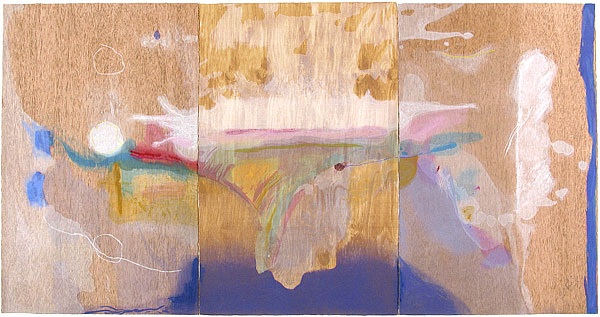
Helen Frankenthaler, Madame Butterfly
A movement known as lyrical abstraction emerged in the United States during the 1960s and 1970s in response to the growth of minimalism and conceptual art. Numerous painters began to move away from geometric, precise styles with hard edges and minimalism, towards a more harmonious and pictorial style, employing rich and sensual colors. They aimed to restore aesthetic principles, rather than continue with spontaneous sociopolitical iconography. This American form of lyrical abstraction is exemplified in the works of Helen Frankenthaler (b. 1928) and Jules Olitski (1922-2007), among others. An exhibition titled "Lyrical Abstraction" was held at the Whitney Museum of American Art from May to July 1971.
During this period, however, there were a number of similar variations of second-generation abstract expressionism (post-painterly abstraction). And although there were clear theoretical distinctions between Color Field Painting, Hard Edge Painting, Color Stain Painting, and Lyrical Abstraction, among others, these points of difference are by no means obvious to the naked eye.
Paintings from the Lyrical Abstraction movement hang today in the best art museums in the world.
Lyrical abstraction - aesthetic and philosophical meaning
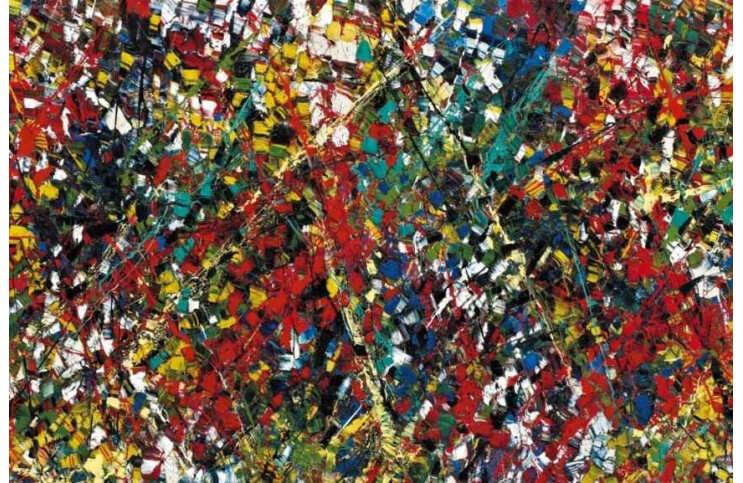
Jean Paul Riopelle
Lyrical abstraction was not a specific school or movement, rather a tendency within Art Informel. Think of it as a balanced, elegant abstract art style (sometimes vibrant, sometimes relaxing) that is almost always loaded with content derived from the natural world.
It is often framed by sumptuous color, its harmonious and pictorial beauty can contrast with the harsh, anguished, and dissonant images produced by other Art Informel groups like Cobra or recent neo-expressionists.
Buy a replica of Wassily Kandinsky, one of the best exponents of Lyrical Abstraction.
KUADROS ©, a famous painting on your wall.

